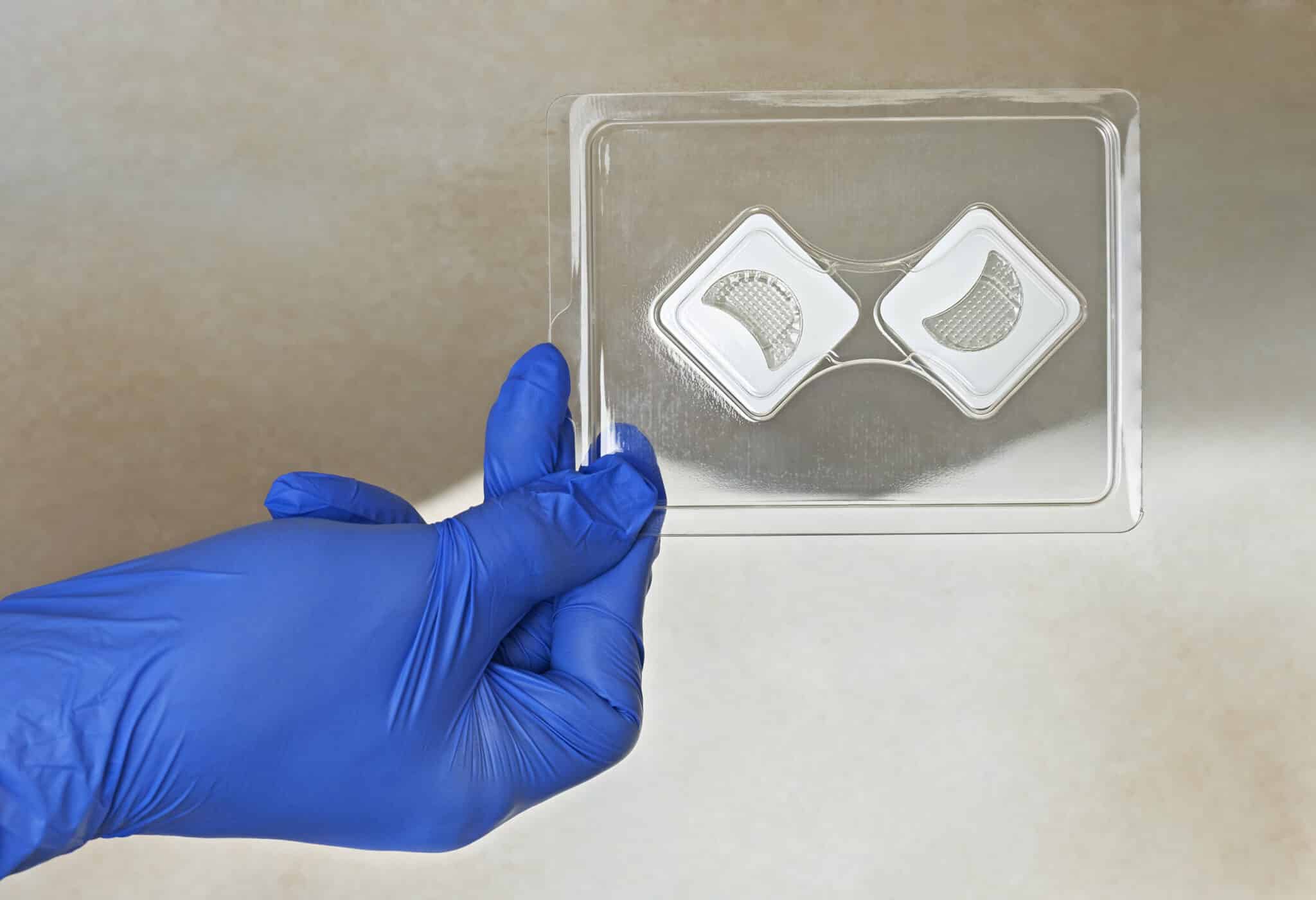From Roller Coasters to Skin Rollers and Beyond
The year 1979 saw the “first” transdermal therapeutic patch hit the market. Alza Corporation’s transdermal scopolamine patch marked a major advancement in controlled drug delivery through the skin. Receiving relief from a painless patch roused cheers from never-again-nauseated roller-coaster- and cruise-lovers.
Scopolamine’s high flux factor made it an ideal therapeutic candidate for transdermal patch development. In plain language, “flux” means it displays a high rate of molecular transfer through the barrier layer of the skin. The small patch featured an adhesive-backed, microporous membrane fed by a drug reservoir. Placed on the highly permeable skin just behind the ear, an initial loading dose was released through the microporous adhesive membrane, while sustained release continued, providing effectiveness for up to 72 hours.
In addition to the ease, pain-free and effective relief, drug delivery through a transdermal patch also avoided first-pass effect, a distinct advantage. First-pass effect challenges other forms of delivery, where the drug is metabolized at a certain site in the body (often the liver), diluting systemic or target site bioavailability.
THE LONG ROAD OF THE TRANSDERMAL PATCH
The accurate modern-day “first” designation for a transdermal patch would likely go to the Johnson brothers. The relentless pursuit of a medicinal patch by Robert Johnson finally crossed the finish line in 1894, in the form of Johnson & Johnson “Mustard” or “Belladonna” plasters (as early band-aids were called). Even though Belladonna turned out to be a deadly poison, the spirit and substance of transdermal patch technology took hold. Smooth patches maintain prominence today in self-administered care for everything from hormones, pain killers and nicotine, to vaccines, antidepressants and ADHD medications.
In spite of the long-ago and far-away evolution of transdermal patches, their longevity is impressive; they live on. What we are also seeing, however, is emerging microneedle technology. Will the next-gen in high-tech needle patches render transdermal patches obsolete?
THE SHARP FOCUS OF THE FUTURE: MICRONEEDLE PATCHES
German dermatologist Ernst Kromayer looked to motorized dental burs to treat scars and other minor skin defects in 1905. In 1995, cosmetic surgeon, Dr. Desmond Fernandes (Philadelphia, PA), developed a microneedle roller device to spur collagen production. Research jumped at the chance to advance the concept, resulting in the publication of hundreds of scientific papers and exciting developments.
As described earlier, the barrier layer of the skin drives transdermal medicine limitations. Microneedle-surfaced patches can pick up where smooth patches leave off. Piercing through the barrier layer, microneedles reach the upper dermis and capillaries to distribute contents. Currently, there are five types of microneedles that can prepare skin for, administer therapeutics, and even draw diagnostic samples through the skin.
Solid microneedle patches create sub-dermal pathways and are then removed, to apply a topical that will distribute through the deep micro-channels, easily reaching capillaries. Solid microneedles can also be coated with medicines to directly deliver into the dermis layer.
Stainless steel and titanium or even polymer and silicone are used in fabrication. Silicone is strong and can be manufactured with precision tips. At this point, however, silicone manufacturing is costly and there are potential safety issues as fragments can break off in the skin and remain in underlying tissue. Corrosion concerns for stainless steel must be considered, which has opened the door to titanium as an alternative.
Coated microneedles use solid needle substrate and add coating to a regulated dosing depth and a high viscosity formulation. Multiple layers of the dip allow some increase in dosage but must leave the underlying substrate unhindered to ensure full insertion and full dose delivery.
Hollow microneedles, as they sound, act as individually filled drug receptacles across the microneedle array. Once the patch is applied to the skin, pressure is applied that causes the microneedles to force the formulation out of the microneedle tips into the tissue.
Dissolving microneedles are made from biodegradable polymers. Each polymer microneedle contains the drug. There are many potential advantages to dissolving microneedle patches. Excellent bio-acceptability, natural dissolution that requires no removal and easy management make it ideal for long-term use, with high compliance. Insertion challenges exist due to the nature of the microneedles hindering full insertion. Precision mixing of the drug and the polymer is also critical, and dissolution after dispensing of medicine takes time, potentially requiring multiple sites. Advances such as partial solid microneedles on which the dissolving portion is adhered to aid insertion are quickly enhancing the dissolving microneedle patch technology.
Hydrogel-forming microneedles are the newest patch technology. Polymers with high-swelling properties form a microneedle that can take up liquid. When inserted via a microneedle patch, hydrogel-forming microneedles absorb the fluid between cells in the dermis tissue, controlling the rate of disbursement. This technology is easily removed, intact, from the site. HFMs also have flexibility in shape and size.
Transdermal patches, with bioavailability and dosing limitations, are expected to remain a cost-effective, painless option for “everyday” healthcare. Microneedle patch technology is a promising frontier, offering painless use, better bioavailability and dosing, while seeking to improve production costs, hygienic storage and protection in transit and poor continuous drug delivery performance. Emerging diagnostic capabilities that use microneedles to draw samples through the dermis will also expand healthcare applications, serving human medicine for the future.

